
Table 1: Status of arterial occlusion


Rohit Sane Rahul Mandole*
Madhavbaug Sane Care, Mumbai, India*Corresponding author: Rahul Mandole, Madhavbaug, Ishan Tower, Building No. 2, 701, 7th Floor, Gokhale Road, Naupada, Thane (West)-400602, Mumbai, India, Tel: 9561043299, E-mail: drrahul@madhavbaug.org
Objective: There is need to develop effective and economical treatments for cardiovascular diseases (CVD) as they affect Indians with great frequency and at a young age. The present study evaluates the efficacy of an Ayurvedic therapeutic procedure, the Ischemia reversal program (IRP), on improving the functional capacity and quality of life in patients with Ischemic heart disease (IHD).
Materials and Methods: Twenty nine patients of either gender, (between 25-65 years of age) who qualified for strict inclusion criteria, were recruited in the study. The IRP therapy consisted of three steps: Snehana, Swedana, and Basti. The dose and duration of treatment consisted of one IRP therapy daily for seven days and follow up for 23 consecutive days. Stress test was conducted on days 1, 7 and 30 to evaluate the effect of IRP on stress test duration, metabolic equivalents (METs), and time of onset of ischemia, improvement in symptoms of IHD, overall health, and requirement of concomitant drug usage before and after the study.
Results: Mean time of onset of Ischemia in the patients improved from 562.13 sec at day 1 to 733.35 sec (improvement by 171.22 sec; p<0.05) at day 30. The regimen was observed to improve the quality of life of patients and blood supply to their myocardium at higher workload, as evident by reduced symptoms, improvement in overall health, and increase in their MET values. The baseline average weight of the patients decreased from 73.03 ± 14.20 Kg to 70.84 ± 13.46 Kg at the end of IRP therapy at day 7 (p<0.001). Moreover, Duke tread mill score, which suggests risk of mortality of the patients, was 25% before treatment, reduced to 20% post treatment on 30th day follow up.
Conclusions: Ischemia Reversal Program (IRP) when administered as add-on therapy to conventional treatment may reduce symptoms of angina to eventually improve quality of life in patients with stable Ischemic Heart Disease (IHD).
Ischemia reversal program; Snehana; Swedana; Basti; Add-on therapy; Ayurveda
Over the past few decades, there has been a rapid transition of disease burden in India. The load of communicable and non-communicable diseases (NCDs) is projected to undergo a reversal [1] by 2020 from its current widespread status since 1990. Among the NCDs, cardiovascular diseases (CVD) account for nearly 50% of all deaths [2,3]. In 2000, an estimated 29.8 million people (~ 3% of the total population of the subcontinent) were identified with Coronary heart disease (CHD) in India [3]. This escalation has been attributed to a paradigm shift in lifestyle including changes in the patients’ dietary pattern and sedentary lifestyle associated with progressive economic growth and urbanization. South Asian and Asian migrants are at an unusually high risk of developing coronary artery diseases (CAD) [4]. Cardiovascular diseases (CVD) affect more number of Indians than their counterparts in developed countries, as well as in many other developing countries. In addition to high rates of mortality, CVD manifests in patients in India at a younger age (almost 10 years earlier) on an average compared to that of the rest of the world [5,6]. This puts additional burden on the country’s economy and calls for a need to develop effective and economical treatment measures. Although drugs and surgery are conventional treatments for cardiovascular diseases, the traditional Indian way of healing, or Ayurveda, is both effective and economical, and is accepted globally now. In fact, a large number of people are getting relief from various diseases with the help of Ayurvedic treatments. In classic Ayurvedic texts, various therapeutic treatments have been mentioned, which can be adopted for improving the functional capacity and quality of life (QOL) in patients with CVD. However, not many studies have reported the efficacy of combination therapies for improving the QOL in patients with CHF.
The present study evaluates the efficacy of ischemia reversal program (IRP), which includes a combination of Snehana (oleation), Swedana (fomentation) and Basti (medicated enema) in improving the functional capacity and quality of life in patients with ischemic heart disease (IHD).
Men and women in the age group of 25 to 65 years having clinical diagnosis of stable ischemic heart disease (IHD) were recruited for the study. The time of onset of ischemia in recruited patients, as determined by stress test using Modified Bruce protocol, spanned 60- 600 seconds and significant occlusion in branches of coronary artery was seen in their CAG reports.
Pregnant or lactating women or women planning to get pregnant during the course of the study, patients who have had acute heart failure, or acute decompensated heart failure episode within last 3 months, patients not on a stable dose of standard treatment for chronic heart failure since last 3 months with the need for an upward dose titration, patients with uncontrolled hypertension (systolic blood pressure [SBP]>150 mmHg and diastolic blood pressure [DBP]>90 mmHg), patients with blood sugar level (fasting<60 and post-prandial>250), and patients with anaemia (haemoglobin<10 gm%) were excluded from the study.
Standard operating procedures were designed for all the procedures included in the ischemia reversal program (IRP) therapy administered to the patients. The IRP therapy consists of following three steps:
The IRP therapy was administered as one session daily for 7 days, i.e. seven IRP therapy sessions and follow-up for 23 days. The therapy was conducted at 10 am in the morning, with a gap of at least 24 hours in between two consecutive therapies.
A detailed history of the patients along with demographic information was recorded on day 1. The weight of the patients was recorded at baseline, at first follow-up, and on day 30. The patients were categorized before and after treatment, based on the cardiac functional capacity as per New York Heart Association (NYHA) classification.
A stress test was conducted on day 1, day 7, and day 30 to evaluate the effect of IRP on the stress test duration, metabolic equivalents (METs), and time of onset of ischemia.
The patients were also assessed for improvement in the symptoms of IHD, overall health, associated complaints and any requirement of concomitant drug usage before and after the study.
The IRP therapy was administered to a total of 29 patients, of which 26 were men and 3 were women. The mean age of the patients recruited in the study was 58.93 ± 7.61 years.
All 29 patients showed occlusion of one or more arteries on angiography. The details of arterial occlusion analysis are mentioned in table 1.

Table 1: Status of arterial occlusion
The cardiac functional capacity as per NYHA classification was assessed before and after treatment. The number of patients classified as per NYHA showed statistically significant improvement post treatment (p<0.05) and are mentioned in table 2.

Table 2: Cardiac functional capacity as per NYHA classification (number
of patients)
Note: p<0.05
Stress test was conducted before and after the completion of the study to evaluate stress test duration, METs, and time of onset of ischemia (Figures 1-5) and the results are mentioned in table 3.
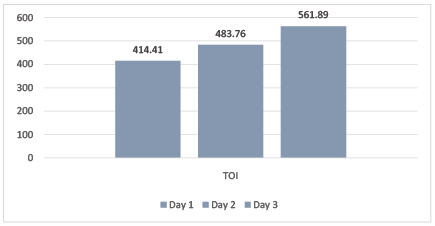
Figure 1: Mean Time for onset of Ischemia
Note: x-axis represents the values in seconds and the y-axis represents
the days on which the measurements were taken.

Table 3: Effect of IRP on parameters
*MET-Metabolic Equivalent of Task
Of the 29 patients (as represented on x-axis) who took the treatment (Figure 2), 23 patients observed increase in the time of onset of ischemia (as represented on y-axis) at day 30 compared to that on day 1. The average increase in ischemia onset value was observed to be 147.48 seconds, and the p-value for ischemia was calculated to be 0.001. Since this is a statistically significant value, impact of the treatment proves to be effective in delaying the time of onset of ischemia.
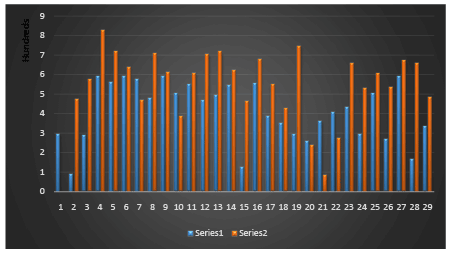
Figure 2: Graphical representation of change in time for onset of Ischemia in all subjects (Series 1=Day 1; Series 2=Day 30)
While conducting the stress test, the HR, SBP and DBP were recorded on day 1, day 7, and day 30, the details of which are mentioned in table 4.

Table 4: Effect of IRP on Heart Rate, Systolic Blood Pressure and Diastolic Blood Pressure
The Heart Rate Recovery (HRR) was also recorded in patients on days 1 and 30. There was a decrease in the HRR from day 1 to day 30; however, this was not statistically significant (Figure 6) and the results are mentioned below in table 5.

Table 5: Effect of IRP on Heart Rate Recovery

Figure 3: Mean MET Values
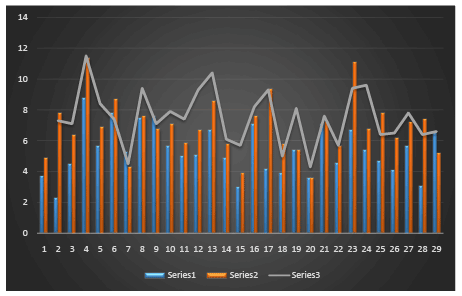
Figure 4: Graphical representation of change in MET value of all subjects
(Series 1=Day 1; Series 2=Day 7; Series 3=Day 30)
(x-axis represents the patients who took the treatment; y-axis represents
the MET values)
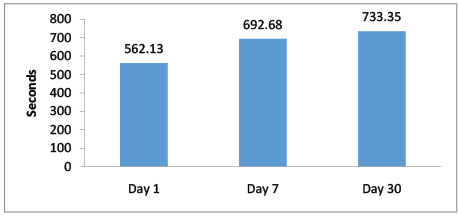
Figure 5: Stress Test Duration
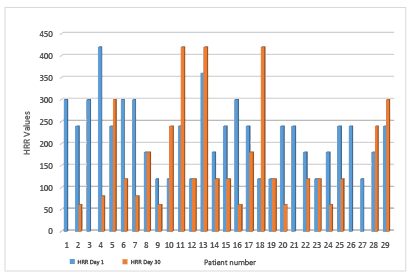
Figure 6: Graphical representation of by-subject data for Heart Rate Recovery
The difference between the above mentioned parameters before and after exercise was calculated and analyzed. There was significant difference (p<0.001) in the HR before and after treatment and the average heart rate recovery timing improved by 50 seconds at day 30 and the details are mentioned in table 6.
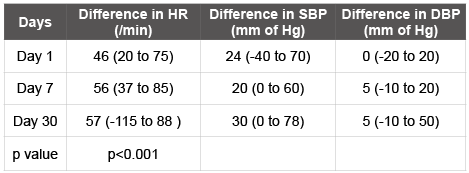
Table 6: Effect of IRP on stress test outcomes of HR, SBP and DBP
Furthermore, the efficacy of IRP on various symptoms of IHD such as chest pain and heaviness was assessed. Effect on overall health, miscellaneous complaints apart from symptoms of IHD and/or the need for concomitant medication was also documented before and after treatment in 17 patients. There was a significant difference in occurrence chest pain and heaviness before and after treatment (p<0.05). In addition, there was a significant improvement in the overall health of the patients (p<0.001). The results have been tabulated in table 7.
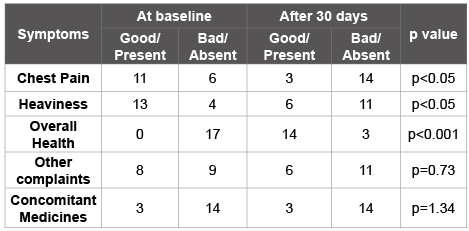
Table 7: Effect of IRP on symptoms of IHD (number of patients)
The Duke Treadmill Score (DTS) is a weighted index combining treadmill exercise time using standard Bruce protocol, maximum net ST segment deviation (depression or elevation), and exercise-induced angina. It was developed to provide accurate diagnostic and prognostic information for the evaluation of patients with suspected coronary heart disease.
Amplitude of ST segment change in V5 lead before the treatment was 1.43, which reduced considerably (>50%) to 0.7 after the treatment (Table 3). A low score proves the positive impact of treatment and thus is better at excluding IHD.
The baseline average weight of the patients was 73.03 ± 14.20 Kg, which decreased to 70.84 ± 13.46 Kg at the end of IRP therapy (Day 7). This difference in change in body weight was found to be statistically significant (p<0.001).
In the present study we evaluated the efficacy of an Ayurvedic treatment regimen (IRP) as add on therapy to conventional treatment in patients with IHD. We observed that the regimen improves blood supply to the myocardium at higher workload, as well as quality of life as evident by reduced symptoms and change in overall health status of the patient. The underlying etiology in patients with IHD is reduced capacity of coronary artery blood (oxygen) supply to meet the myocardial oxygen demand. The determinants of myocardial oxygen demand relate to the workload on the myocardium and include heart rate, systemic systolic blood pressure, ventricular wall tension, and velocity of myocardial contractility [7].
A significant difference in HR before and after treatment might be blunt inotropic response due to antihypertensive medicine like angiotensinconverting-enzyme inhibitors (ACE), calcium channel blockers, and diuretics. Another important observation is improvement in functional capacity and QOL that have been identified as the goals of managing patients with stable IHD [7,8].
Cardiac ischemia is a result of an imbalance between myocardial oxygen supply and demand. Oxygen extraction from the blood perfusing the myocardium is very high; therefore, an increase in myocardial oxygen supply can only be met by an increase in coronary blood flow. Altered coronary reactivity (impaired dilation from endothelial dysfunction, heightened smooth muscle activation like spasm, etc.) at both macro- and micro-vascular levels may contribute in limiting the blood flow. Stiffness in central arteries increases in atherosclerosis and is an independent predictor of adverse coronary events [8]. Various procedures performed as a part of IRP may help to reverse the phenomena responsible for ischemia. We hypothesize that Snehana (centripetal oleation) can be useful in reducing sympathetic over-stimulation and improving vascular tone. This decrease in myocardial workload would thus reduce the risk of ischemia. Furthermore, Swedana, by inducing sweating, may cause vasodilation at the microvasculature, which in turn reduces systemic vascular resistance and the resulting afterload. The reduction in afterload decreases cardiac workload and myocardial oxygen demand, thus reducing the risk of ischemia. Finally, the 100 ml Basti decoction contains Tribulusterrestris (preclinical studies have proven it has nitric oxide mediated vasodilatory effect) [9], Curcuma longa (a proven anti-inflammatory herb) [10] and Phyllanthusemblica (animal studies have proved that Phyllanthusemblica can reduce oxidative stress) [11]. Besides, the Basti procedure may reduce oxidative stress and inflammation along with the risk of ischemia.
Evidence from INTERHEART study provides rationale for developing treatment algorithms and treatment guidelines for CHD at various levels of healthcare. As per the implications of the INTERHEART study, strategies should focus on early detection of clinical disease in patients and cost-effective secondary prevention measures to avoid complications for the management of CAD [12,13]. The IRP regime can prove to be a cost-effective measure that can be afforded by patients from lower socioeconomic strata too.
Cardiovascular diseases (CVD) are the one of the primary causes of mortality in India, where, among the top five causes of death, CVDs rank first among rural as well as urban population [14]. The IRP can prove to be a major breakthrough in the management of CVDs.
Metabolic Equivalent of Task (MET) provides a convenient method to describe the functional capacity or exercise tolerance of an individual. After IRP, there was a significant improvement in the METs. This improvement was associated with significant changes in time for onset of ischemia [15].
Heart rate recovery as a prognostic marker has been validated in both asymptomatic patients and in those being evaluated for chest pain. The IRP reduces the HRR at higher workload; meanwhile, the MET value increased, although the change was not statistically significant.
In addition, Duke tread mill score, which suggests risk of average risk of mortality in all subjects was 25% before treatment, but reduced to 20% post treatment on 30th days follow up.
Our study proves the optimal efficacy of IRP; however, since this was a pilot study, the inclusion for age was over a wide range (25-65 years) to ensure maximum representation of patients. However, for future trials we intend to include larger sample size and classify the patients in 3 age groups of young, adults and aging patients versus age matched controls, with equal gender representation.
Ischemia Reversal Program (IRP) when administered as an add-on therapy to conventional treatment may improve blood supply to the myocardium and thus reduce symptoms of angina to significantly improve quality of life in patients with stable Ischemic Heart Disease (IHD).
Download Provisional PDF Here
Article Type: Research Article
Citation: Sane R, Mandole R (2016) Pilot Open Label Single Arm Efficacy Study of Ischemia Reversal Program as Add-on Therapy to Conventional Treatment in Patients with Stable Ischemic Heart Disease. J Hear Health 2(3): doi http://dx.doi. org/10.16966/2379-769X.125
Copyright: © 2016 Rohit Sane, et al. This is an open-access article distributed under the terms of the Creative Commons Attribution License, which permits unrestricted use, distribution, and reproduction in any medium, provided the original author and source are credited.
Publication history:
All Sci Forschen Journals are Open Access